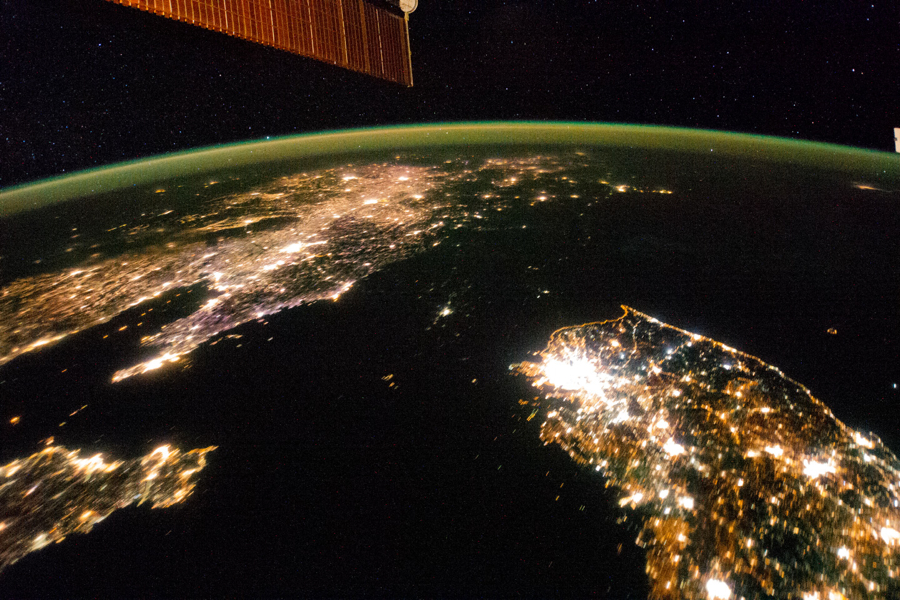The dramatic photograph below, taken January 30 from the International Space Station, illustrates the stark difference between North and South Korea. NASA’s Earth Observatory site explains the dark zone on the image:
Flying over East Asia, astronauts on the International Space Station (ISS) took this night image of the Korean Peninsula. Unlike daylight images, city lights at night illustrate dramatically the relative economic importance of cities, as gauged by relative size. In this north-looking view, it is immediately obvious that greater Seoul is a major city and that the port of Gunsan is minor by comparison. There are 25.6 million people in the Seoul metropolitan area — more than half of South Korea’s citizens — while Gunsan’s population is 280,000.
North Korea is almost completely dark compared to neighboring South Korea and China. The darkened land appears as if it were a patch of water joining the Yellow Sea to the Sea of Japan. Its capital city, Pyongyang, appears like a small island, despite a population of 3.26 million (as of 2008). The light emission from Pyongyang is equivalent to the smaller towns in South Korea.
Coastlines are often very apparent in night imagery, as shown by South Korea’s eastern shoreline. But the coast of North Korea is difficult to detect. These differences are illustrated in per capita power consumption in the two countries, with South Korea at 10,162 kilowatt hours and North Korea at 739 kilowatt hours.
The United Nations released a scathing report on North Korea February 17. The Commission of Inquiry on human rights in the Democratic People’s Republic of Korea documents “a grim array of human rights abuses, driven by “policies established at the highest level of State.”
F&O’s international affairs columnist Jonathan Manthorpe concludes that because the report emphasizes China’s complicity “in the unparalleled atrocities by the North Korean regime of its people,” China may be expected to use its Security Council veto to block action on the report’s recommendations. (Read Manthorpe’s column here; F&O subscription required.)


